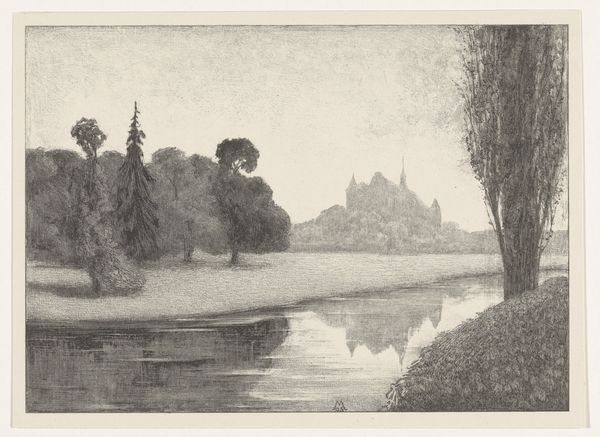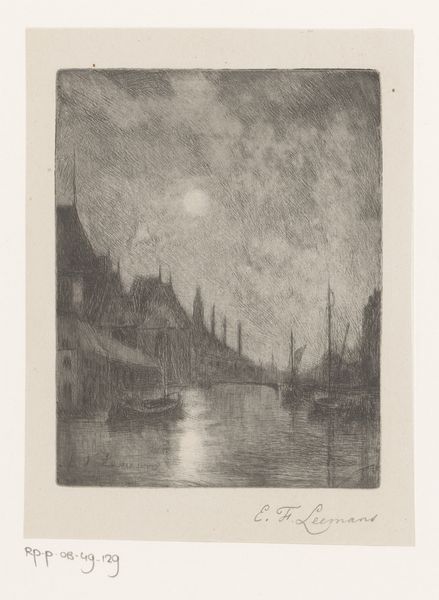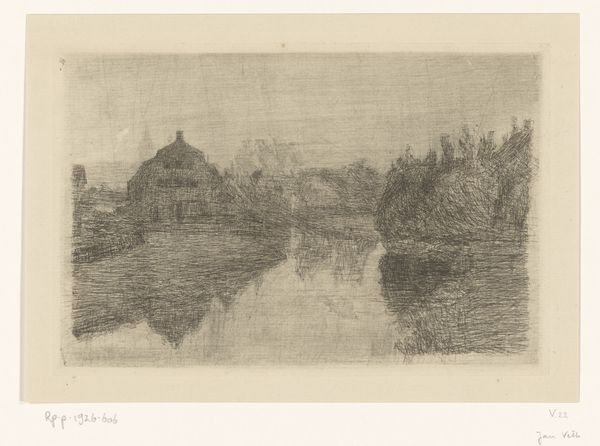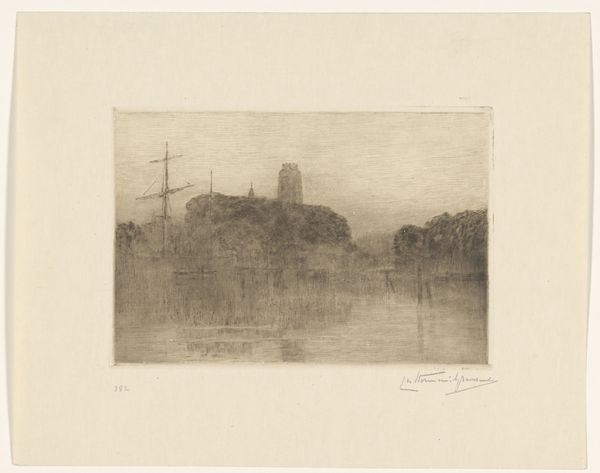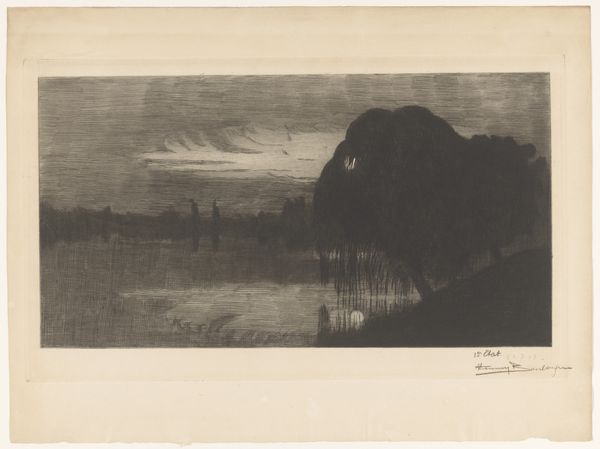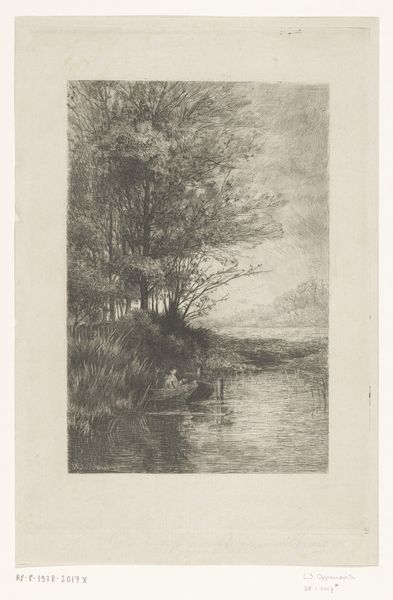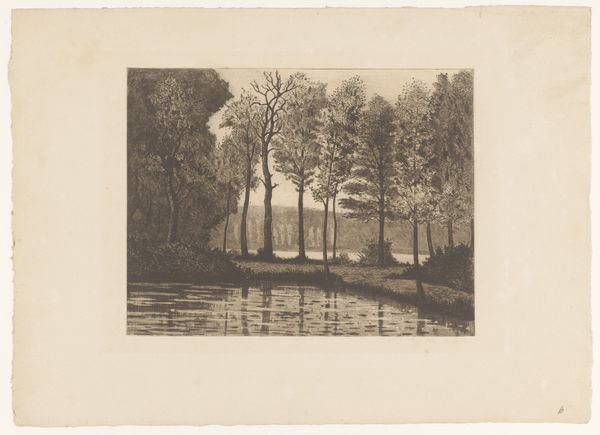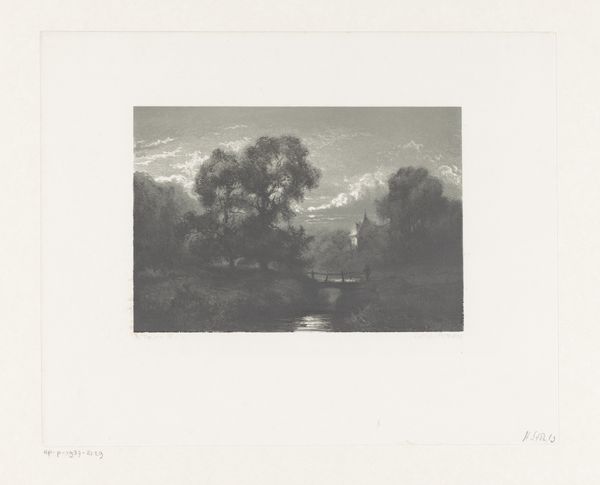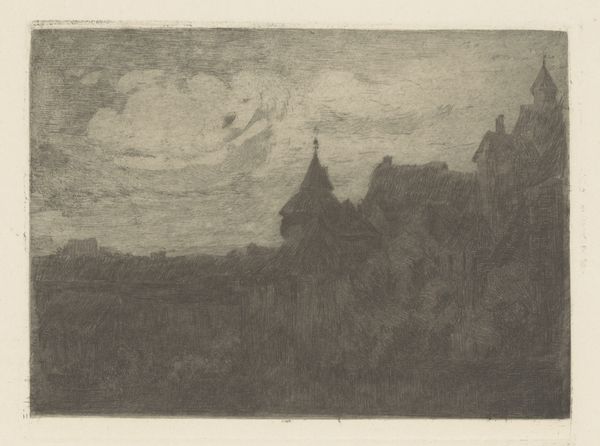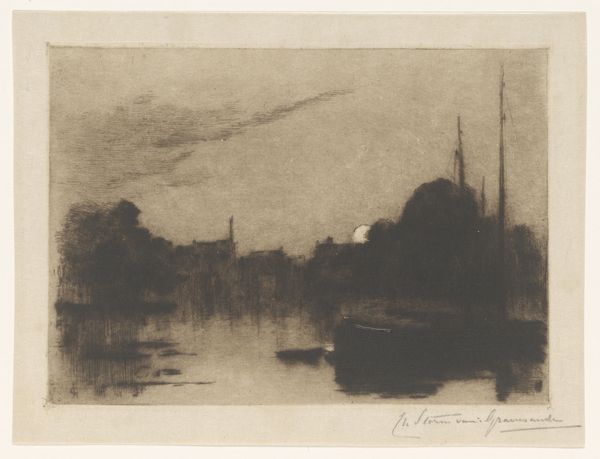
Dimensions: height 247 mm, width 358 mm
Copyright: Rijks Museum: Open Domain
Herman Boulenger created this night scene of a village with a church by a body of water, using black chalk and graphite. Boulenger, working in the late 19th and early 20th centuries, came of age during a period of rapid social and artistic transformation. This work engages with the Romantic tradition of landscape, but it also evokes the growing unease that accompanied modernization. The village at night, with its looming church, suggests a community rooted in tradition, yet the darkness and the starkness of the composition hint at an undercurrent of uncertainty. Boulenger's choice to depict the scene at night can be seen as a way of obscuring the details of everyday life and highlighting the more mysterious aspects of the natural world. Consider the ways in which gender, class, and religious identity are subtly interwoven in the image. How might the experience of viewing this scene differ depending on one's own position within these social structures? Ultimately, Boulenger's "Nachtgezicht van een dorp met kerk aan een water" invites us to reflect on our own relationship to the past and to consider how the legacies of history continue to shape our present.
Comments
No comments
Be the first to comment and join the conversation on the ultimate creative platform.

